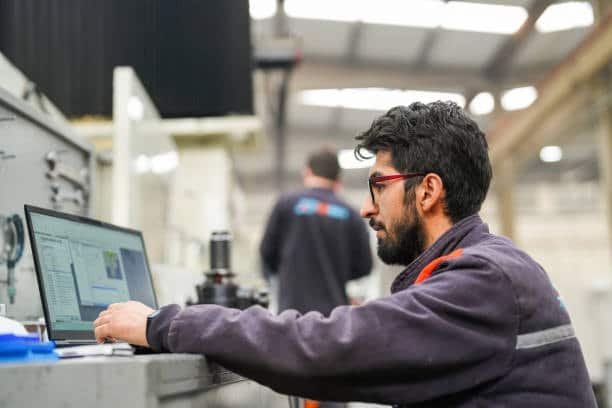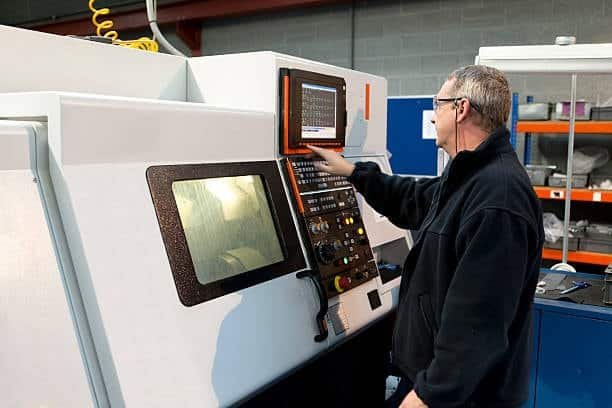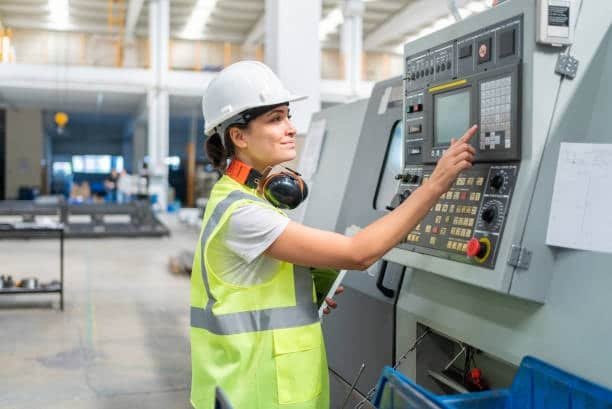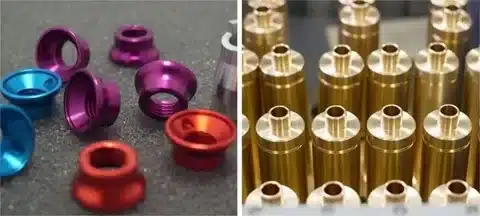Introduction to CNC Programming
Computer Numerical Control (CNC) programming, also known as computer numerical control programming, stands at the heart of modern manufacturing, transforming digital designs into precise physical components. This sophisticated technology has revolutionized production processes across industries, from aerospace and automotive to medical devices and consumer goods. CNC programming enables manufacturers to achieve unprecedented levels of precision, consistency, and efficiency in machining operations.
The Evolution of CNC Programming
The journey of CNC technology began in the 1940s with the development of Numerical Control (NC) by John T. Parsons. Initially, programming involved punched tape cards and basic command sequences. Today’s CNC programming has evolved into a sophisticated discipline incorporating advanced software, multi-axis capabilities, and integration with CAD/CAM systems. This evolution reflects broader technological advancements, including increased computing power, improved sensors, and enhanced connectivity that defines modern manufacturing environments.
Understanding CNC Machine Types
Different manufacturing needs require specialized CNC machines. The most common types include:
- Mills: Ideal for cutting and drilling operations, featuring rotating cutting tools and moving workpieces
- Lathes: Specialized for creating cylindrical parts by rotating the workpiece against a cutting tool
- Routers: Perfect for woodworking and soft material applications
- Plasma cutters: Used for cutting metal sheets and plates using plasma torches
- EDM machines: Employing electrical discharges to shape conductive materials with extreme precision
Each machine type requires specific programming approaches tailored to its mechanical configuration and operational parameters.
CNC Programming Languages
Several programming languages serve as the foundation for communicating with CNC machines:
- G-code: The industry standard language interpreted by most CNC controllers
- M-code: Used for auxiliary machine functions like coolant control and tool changes
- Conversational programming: User-friendly interfaces that generate code through graphical inputs
- APT (Automatically Programmed Tools): Advanced language for complex multi-axis operations
- Manufacturer-specific languages: Proprietary formats developed by equipment manufacturers
G-code remains the most widely used language, consisting of alphanumeric commands that define machine movements, speeds, and operations.
The Fundamentals of G-Code

G-code forms the backbone of CNC programming, with commands that control machine movement, cutting parameters, and operational modes. Key G-code concepts include:
- Modal commands: Settings that remain active until changed
- Absolute vs. incremental positioning: Defining positions from a fixed origin or relative to the current position
- Work coordinate systems: Creating multiple reference frames within the machine environment
- Canned cycles: Pre-programmed routines for common operations like drilling patterns
Mastering G-code interpretation requires understanding coordinate systems, machine axes, and the logical flow of operations necessary to create complex parts.
CAD/CAM Integration in CNC Programming

Modern CNC programming typically begins with Computer-Aided Design (CAD) software where parts are designed with precise geometrical specifications. Computer-Aided Manufacturing (CAM) software then transforms these designs into toolpaths and generates the corresponding CNC code. This integrated workflow offers several advantages:
- Seamless transition from design to manufacturing
- Automatic generation of complex toolpaths
- Simulation capabilities to verify programs before execution
- Optimization features for improved efficiency
- Enhanced documentation and revision control
The CAD/CAM integration significantly reduces programming time and minimizes errors compared to manual programming methods.
Tool Path Generation Strategies
Efficient toolpath planning is essential for optimizing machining operations. Various strategies exist for different applications:
- Roughing operations: Removing bulk material quickly with deeper cuts and higher feed rates
- Finishing operations: Achieving final dimensions and surface quality with lighter cuts
- Contouring: Following precise paths to create complex geometric features
- Pocketing: Efficiently removing material from enclosed areas
- Adaptive clearing: Intelligent material removal that maintains consistent tool engagement
Selecting the appropriate strategy depends on part geometry, material properties, machine capabilities, and quality requirements.
CNC Program Optimization Techniques
Optimizing CNC programs, including tool length compensation, improves productivity, enhances part quality, and extends tool life. Key optimization techniques include:
- Feed and speed adjustments: Calibrating cutting parameters for specific materials and operations
- Tool selection optimization: Choosing the most appropriate cutting tools for each operation
- Minimizing air cutting: Reducing non-cutting movement time
- Tool path smoothing: Creating fluid movement transitions to maximize machine dynamics
- Operation sequencing: Organizing machining steps logically to minimize setup changes
Modern simulation software allows programmers to analyze and refine these aspects virtually before committing to actual machining.
Multi-Axis CNC Programming Challenges

As manufacturing complexity increases, multi-axis machining becomes essential for creating sophisticated components. Programming for 4-axis and 5-axis machines presents unique challenges:
- Tool orientation management: Controlling tool angles relative to part surfaces
- Collision avoidance: Preventing interference between machine components
- Rotary axis limitations: Working within the physical constraints of rotational movements
- Post-processor complexity: Generating accurate code for synchronized axis movements
- Coordinate transformation: Maintaining dimensional accuracy across multiple axes
Advanced CAM systems provide specialized features to address these challenges, including simultaneous multi-axis toolpaths and automatic collision checking.
CNC Programming for Specific Materials
Different materials require tailored programming approaches to achieve optimal results:
- Metals: Varying cutting parameters based on hardness, thermal conductivity, and machinability cam programming
- Plastics: Controlling heat generation to prevent melting and deformation
- Composites: Managing fiber orientation and potential delamination cad and cam software
- Wood: Addressing grain direction and moisture content considerations types of cnc programming
- Exotic materials: Implementing specialized strategies for titanium, Inconel, and other challenging materials cnc programming software
Successful CNC programming accounts for these material-specific requirements by adjusting feeds, speeds, various cutting tools, and machining strategies accordingly cnc machine programming.
Advanced CNC Features and Capabilities
Modern CNC systems offer sophisticated features that extend beyond basic positioning and cutting:
- Adaptive control: Real-time adjustment of machining parameters based on sensor feedback cad models
- Tool monitoring: Detecting tool wear and breakage to prevent quality issues
- Probing capabilities: Automating part setup and in-process measurement
- High-speed machining: Optimizing motion control for rapid material removal
- Toolpath simulation: Visualizing the machining process before execution
Leveraging these advanced capabilities requires specialized programming knowledge but delivers significant performance improvements.
Common CNC Programming Errors and Troubleshooting

Even experienced programmers encounter challenges that require systematic troubleshooting:
- Syntax errors: Incorrect command formatting that prevents program execution
- Logical errors: Properly formatted commands that produce unintended results
- Coordinate system misalignments: Discrepancies between programmed and actual positions
- Tool compensation issues: Incorrect offset values leading to dimensional errors
- Post-processor problems: Incompatibilities between CAM output and machine controller
Developing troubleshooting skills involves understanding error messages, analyzing program structure, and methodically testing potential solutions.
Quality Control in CNC Programming
Ensuring consistent part quality requires integrating quality control measures throughout the programming process:
- In-process inspection: Programming measurement cycles during machining
- Statistical process control: Monitoring dimensional trends to detect drift
- Surface finish verification: Adjusting programming parameters to achieve required finishes
- Geometric tolerance validation: Confirming compliance with GD&T specifications
- Documentation standards: Maintaining comprehensive records of programming decisions
These quality-focused approaches help minimize variation and ensure reproducible manufacturing results.
CNC Programming for Industry 4.0
The integration of CNC programming with broader digital manufacturing initiatives characterizes Industry 4.0 implementations:
- Digital twins: Virtual representations of physical machines and processes
- Cloud-based programming: Collaborative development and storage of CNC programs
- AI-assisted optimization: Intelligent algorithms that enhance program efficiency
- IoT connectivity: Linking CNC controllers with enterprise systems for data exchange
- Predictive maintenance: Using operational data to forecast service needs
These technologies transform traditional CNC programming into a connected discipline within the smart factory ecosystem.
The Future of CNC Programming
Emerging trends indicate continuing evolution in CNC programming methodologies:
- Generative design integration: Automated creation of optimized part geometries
- Augmented reality interfaces: Visual programming aids that overlay digital information on physical machines
- AI-driven toolpath generation: Intelligent systems that learn from previous machining operations
- Universal programming standards: Efforts to harmonize programming approaches across equipment types
- Sustainable manufacturing considerations: Programming to minimize energy consumption and material waste
These developments promise to make CNC programming more accessible, efficient, and environmentally responsible.
Conclusion
The mastery of CNC programming opens possibilities for creating components with unprecedented precision and complexity. Beyond technical proficiency, successful CNC programming demands a holistic understanding of the manufacturing process—from material behavior and cutting dynamics to quality requirements and production efficiency. By combining traditional programming fundamentals with emerging technologies, manufacturers can leverage CNC capabilities to maintain competitive advantages in increasingly demanding markets. The future of manufacturing will continue to rely on skilled CNC programmers who can bridge the gap between advanced design concepts and physical production realities.


